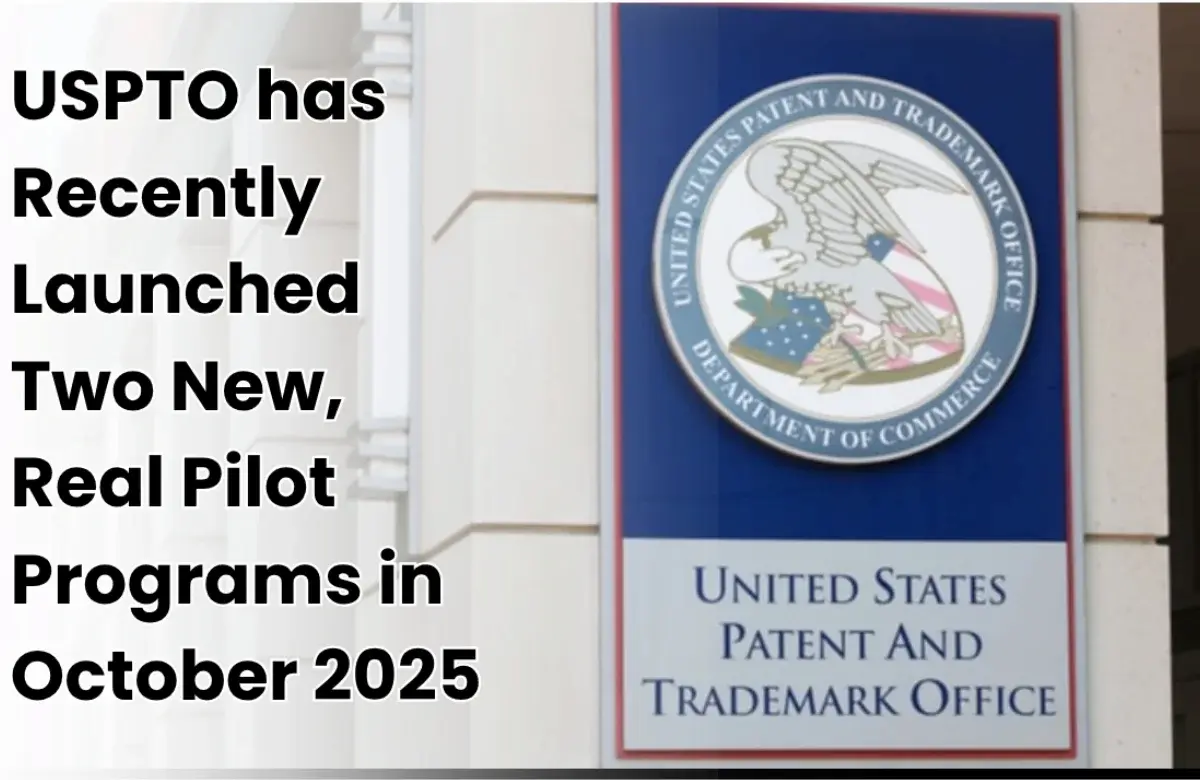
The USPTO is the main authority for patents and trademark in the U.S., and its policies matter worldwide. Because so much global technology, funding, and IP strategy flows through the USPTO launches AI Pilot Patent Program U.S. market, changes at the USPTO often influence how innovation is protected in other countries as well. In October 2025, the USPTO launched two new pilot programs aimed at making the patent process faster and more effective. These programs focus on speeding up examination and improving the quality of prior art review. Keep reading to understand what these programs are and stay connected to learn more about the latest IP news in India and across the globe.
What Are the Two New USPTO Pilot Programs Launched in October 2025?
To understand the benefits of the two new programs launched by the USPTO in October 2025, it’s important to first look at what they are and how they actually work.
The Streamlined Claim Set Pilot Program:
This is designed to make the patent review process faster for applications that are simple and clearly written. If an applicant files a patent with just one independent claim and up to ten total claims, their application can jump the queue and be examined sooner. The idea is to reward applicants who submit focused, well-structured claims while helping the USPTO reduce its backlog and speed up examination times.
The Automated Search Pilot Program:
This is a second initiative that takes things a step further by using AI technology to assist examiners before they even start a full review. As soon as an application is filed, the system automatically searches global databases and identifies the most relevant prior art. This gives both examiners and applicants an early look at potential overlaps, helping streamline the entire process. In short, these two programs are all about making patent examination faster, smarter, and more efficient.
Read Also: Kerala HC Dismisses Petition in India Gate Trademark Case, Says Delhi Has Exclusive Jurisdiction
How Will the USPTO’s New Programs Improve Patent Examination Efficiency?
With the introduction of these two programs, several positive changes are expected to reshape the patent examination process. The main benefits include:
- Applications with concise and well-defined claims will be examined sooner, helping reduce overall processing time.
- Inventors are encouraged to submit focused and clearly structured claims, leading to better clarity and examination efficiency.
- Automated prior art searches will make the review process more accurate and consistent.
- Applicants will receive prior art information early, allowing them to refine and strengthen their claims before detailed examination.
- Automation and simplified applications will help examiners manage their caseloads more effectively.
- A faster and more efficient examination process will further enhance the reputation and reliability of the U.S. patent system.
- Together, these programs are set to build a faster, smarter, and more transparent patent process, benefiting inventors, examiners, and the innovation ecosystem as a whole.
What Will Be the Future Impact of the USPTO’s New Patent Pilot Programs?
The two USPTO programs introduced in 2025 are expected to have a lasting impact on how patents are examined and managed globally. The Streamlined Claim Set Pilot Program will likely encourage applicants to draft clearer, more focused claims from the outset, setting a new standard for quality and efficiency in patent filing. Over time, this could significantly reduce examination backlogs and improve overall patent quality. Meanwhile, the Automated Search Pilot Program has the potential to transform the way prior art is identified, as AI-driven tools become more advanced and integrated into examination workflows.
Conclusion
USPTO Launches AI Pilot Patent Program, and it marks a major step toward a faster and more intelligent patent system. By combining streamlined claim review with AI-powered search, the initiatives aim to improve patent quality, reduce delays, and make examination more efficient. These changes not only benefit U.S. innovators but also set a new global benchmark for how intellectual property Rights (IPR) can be managed in the digital era.
Read Also: Japan Patent Office Denies Nintendo Patent Application in Ongoing Palworld Dispute
